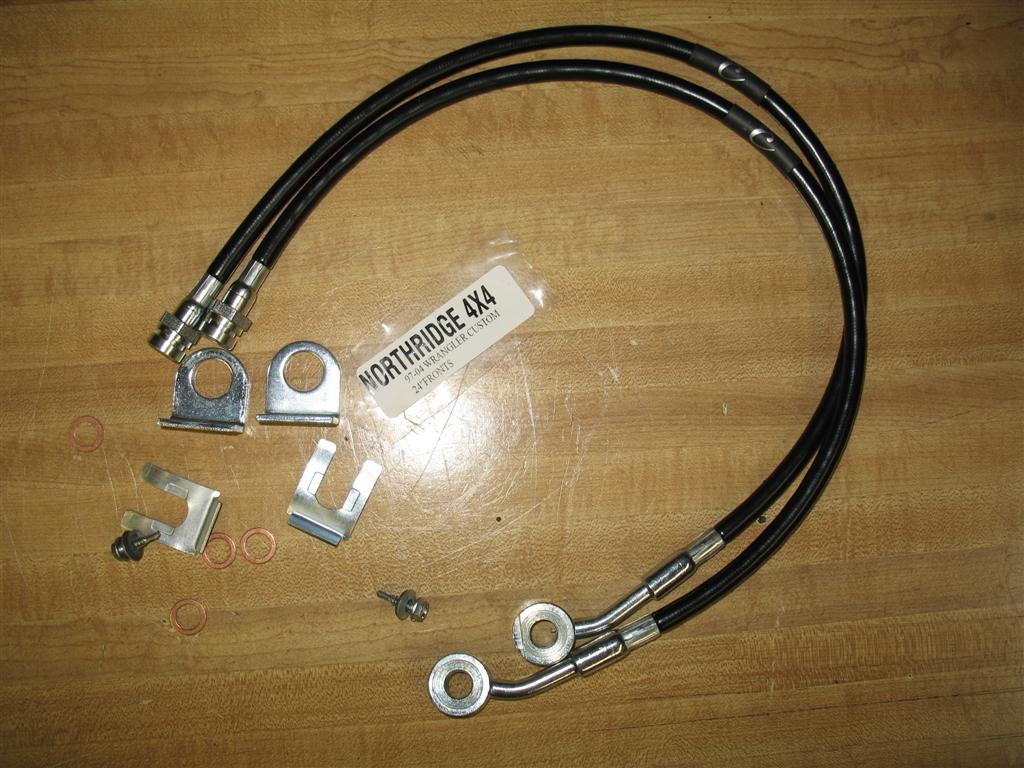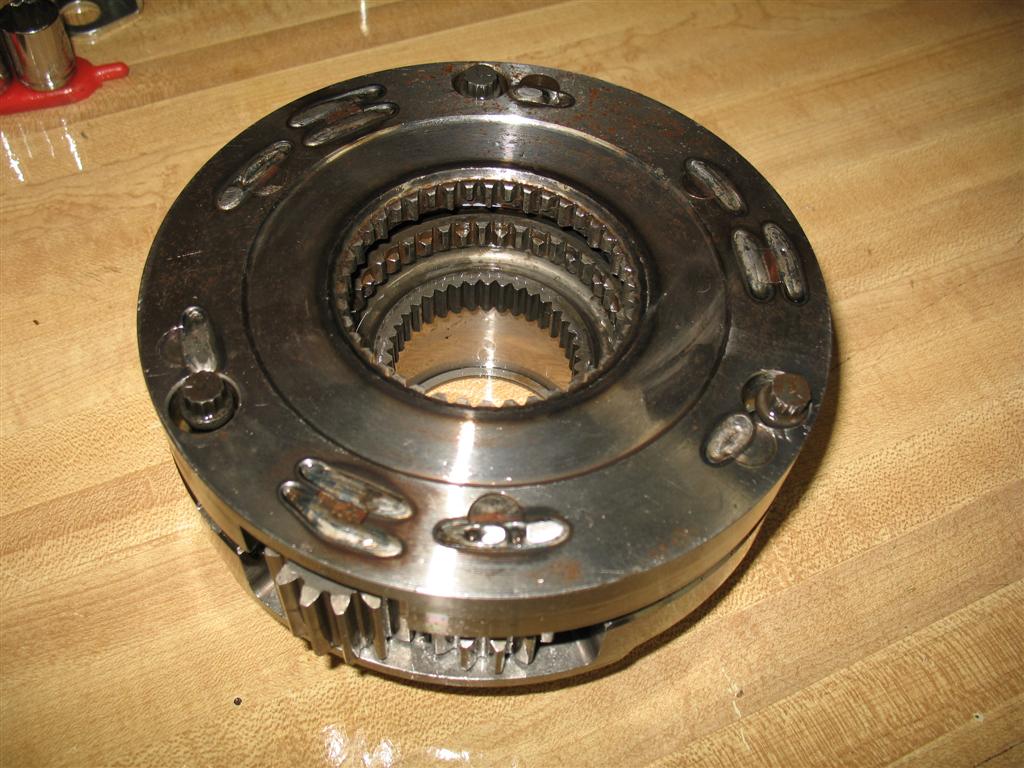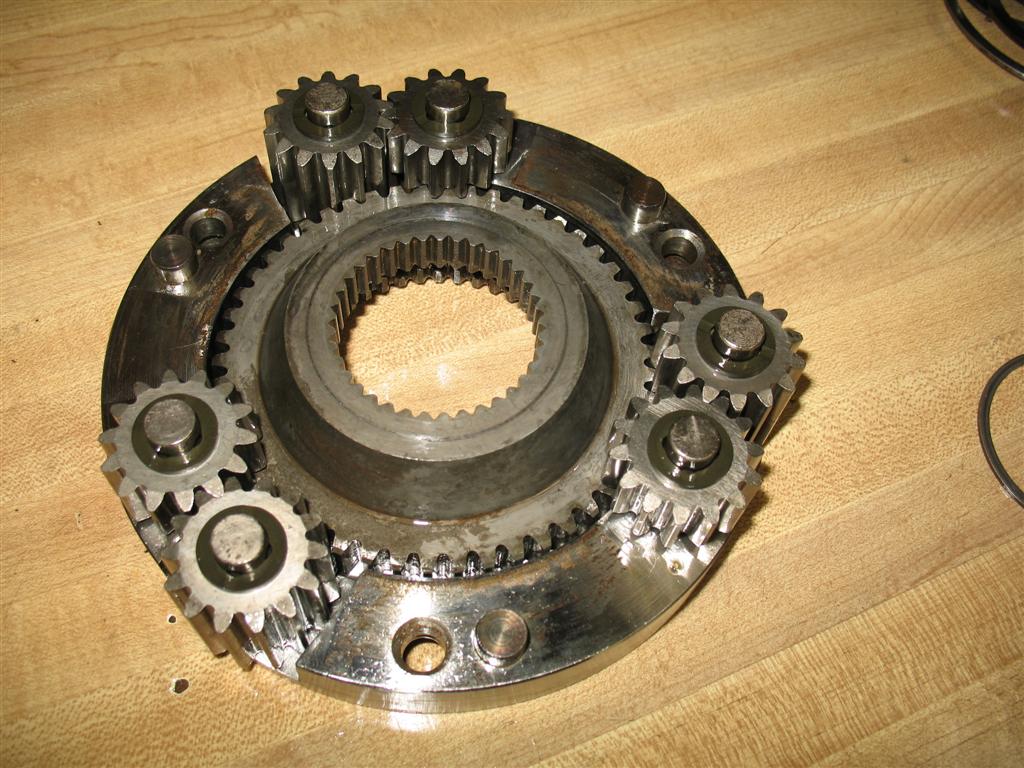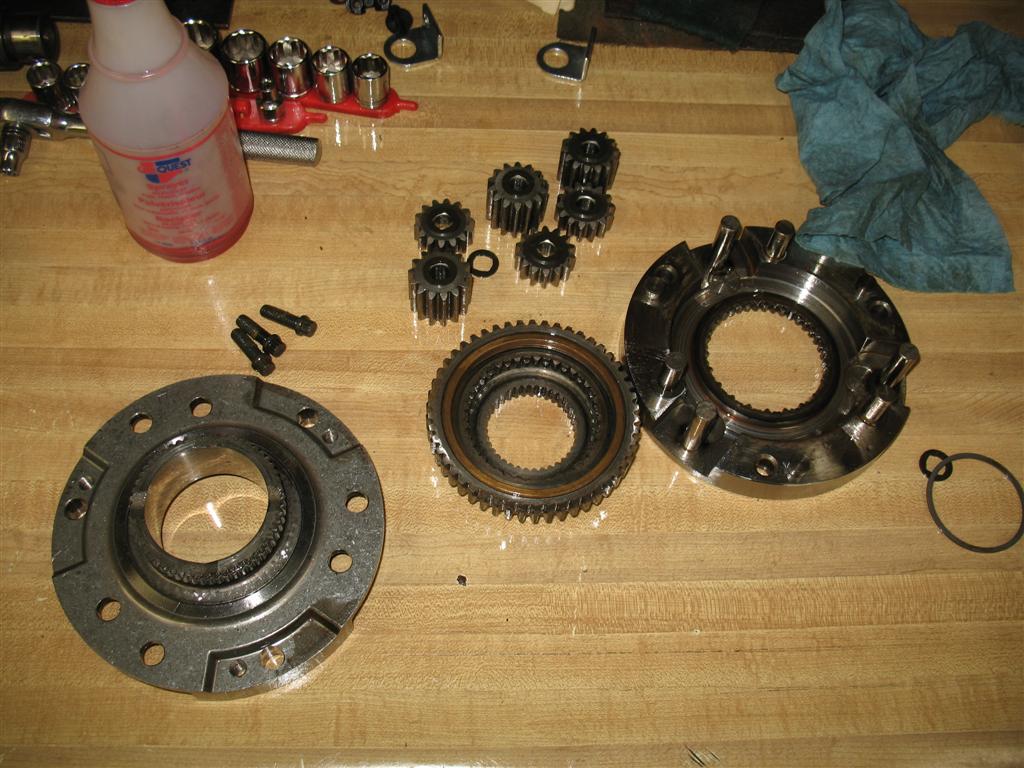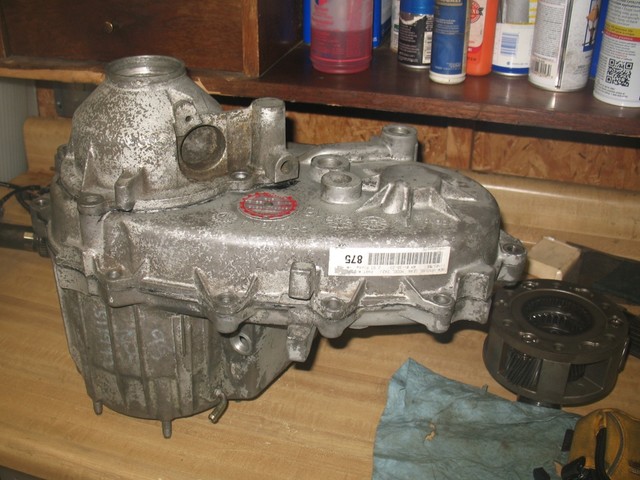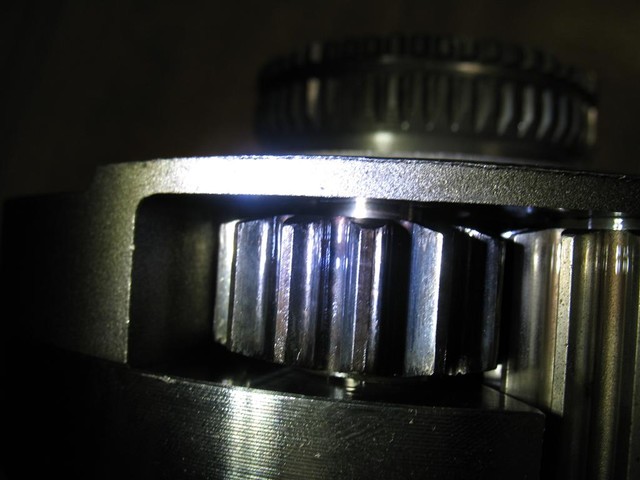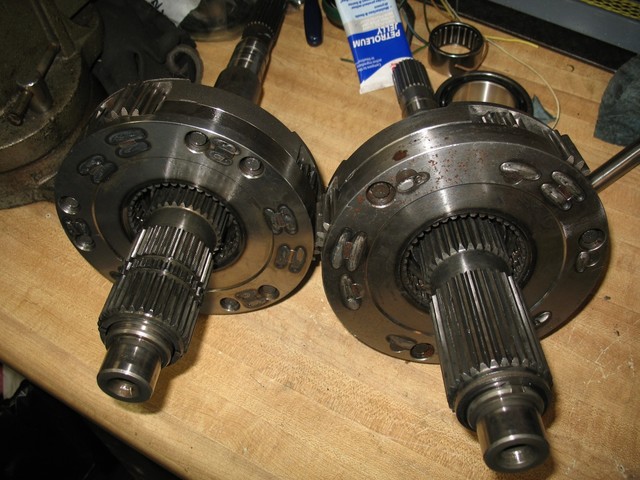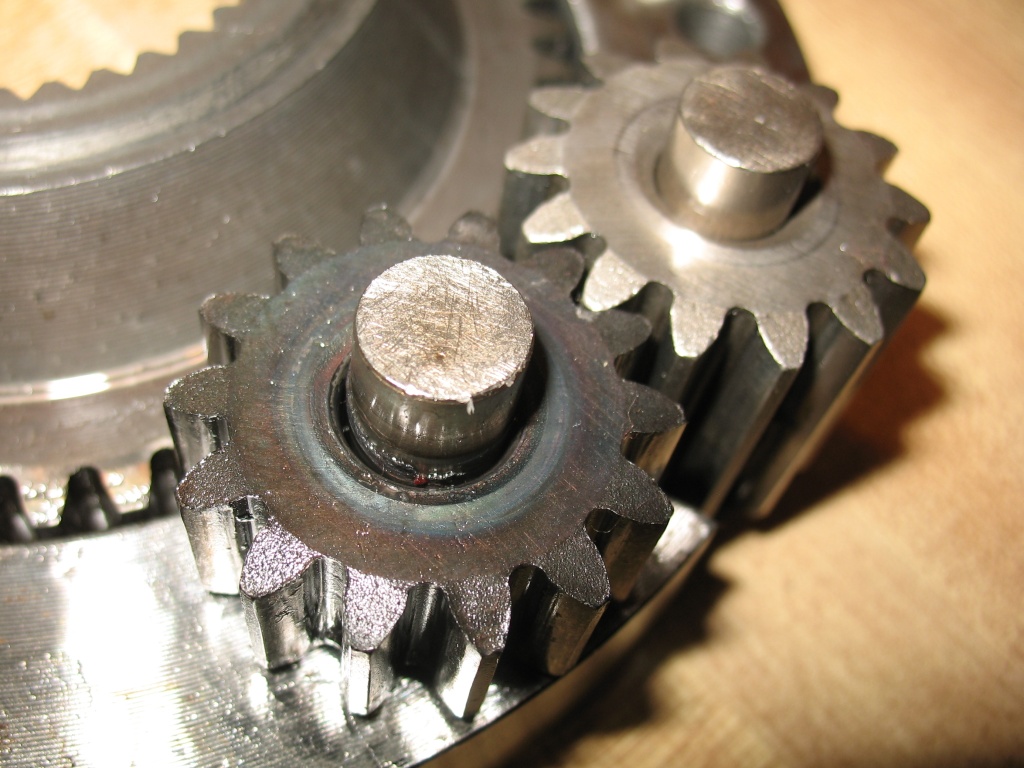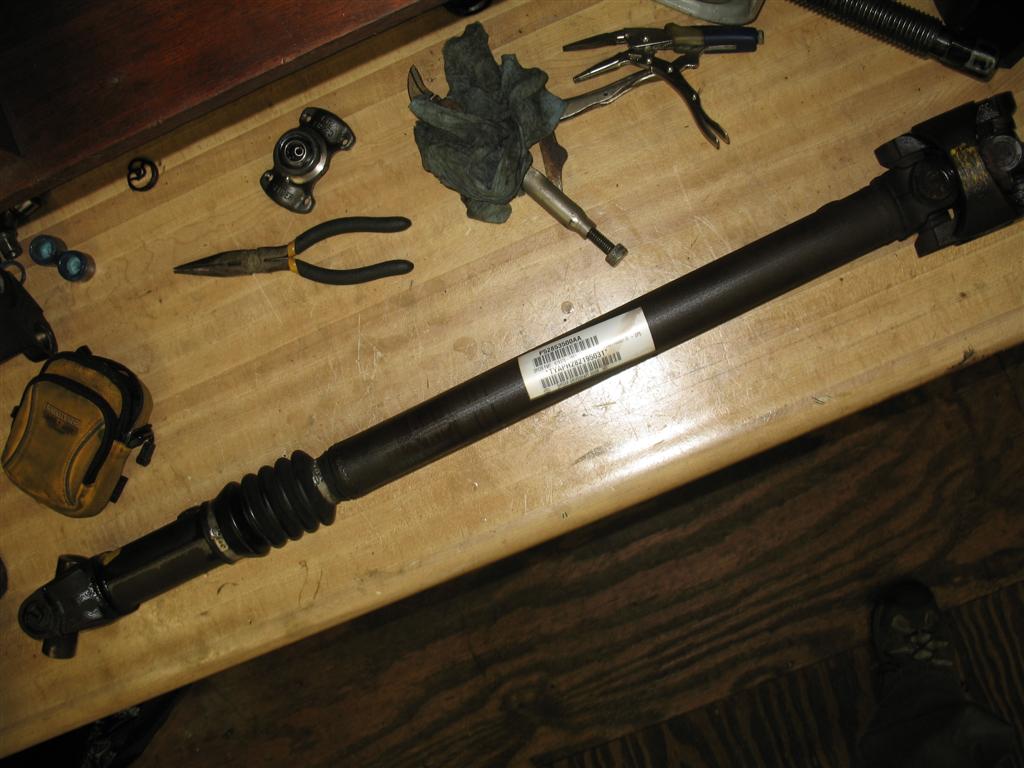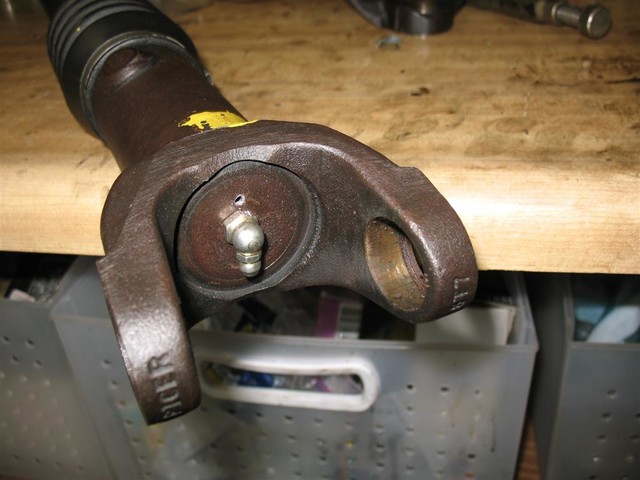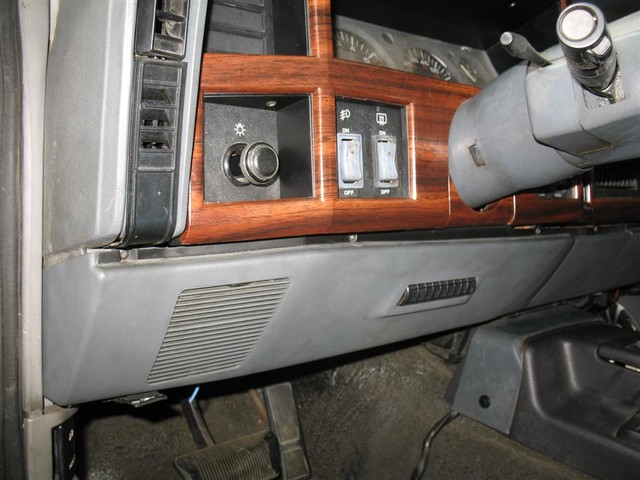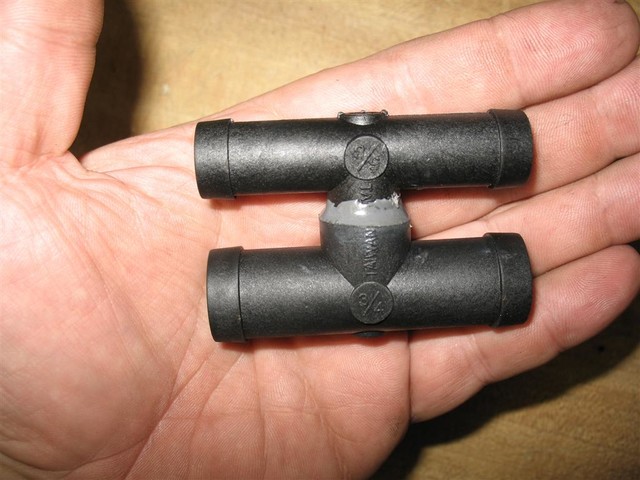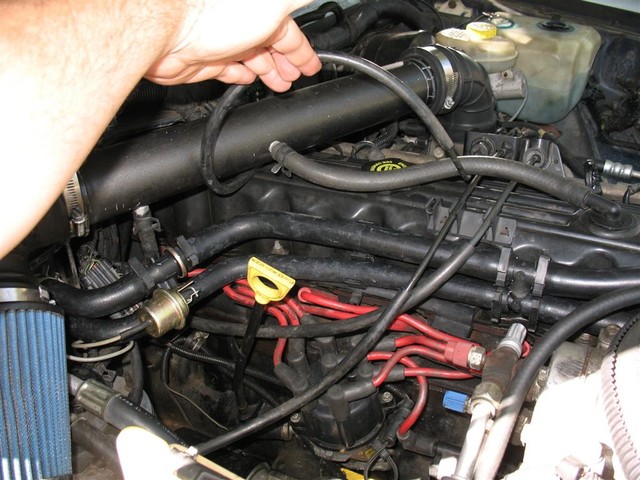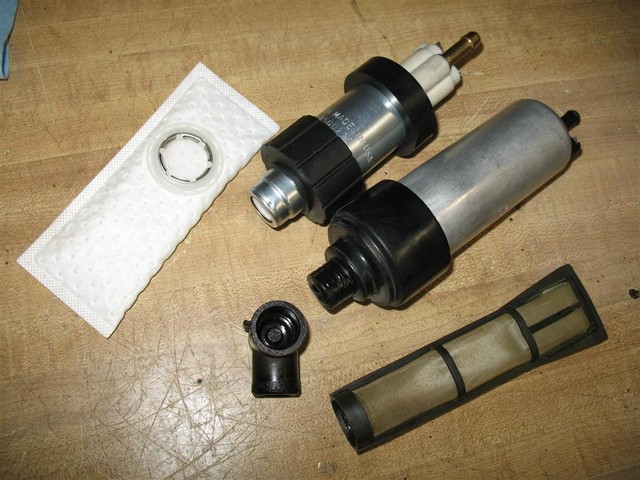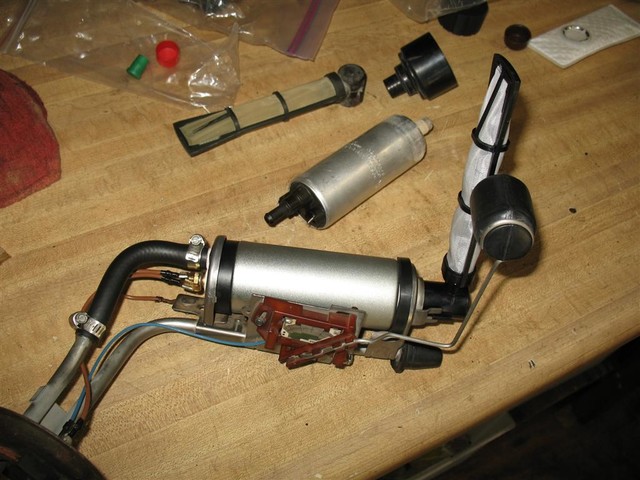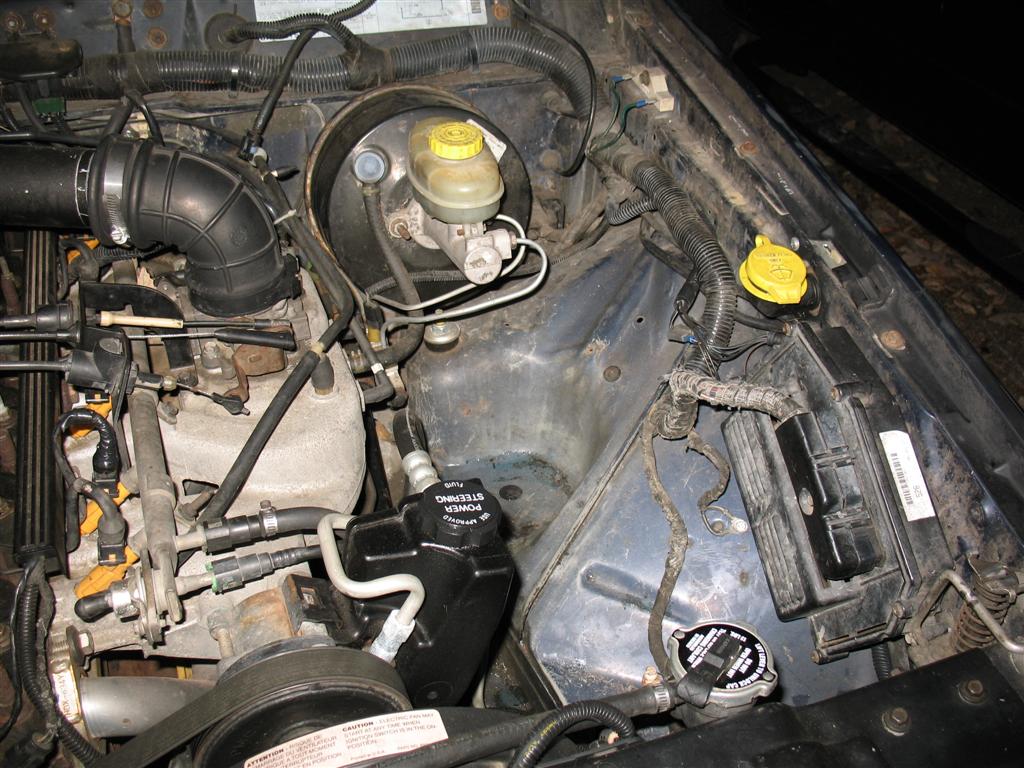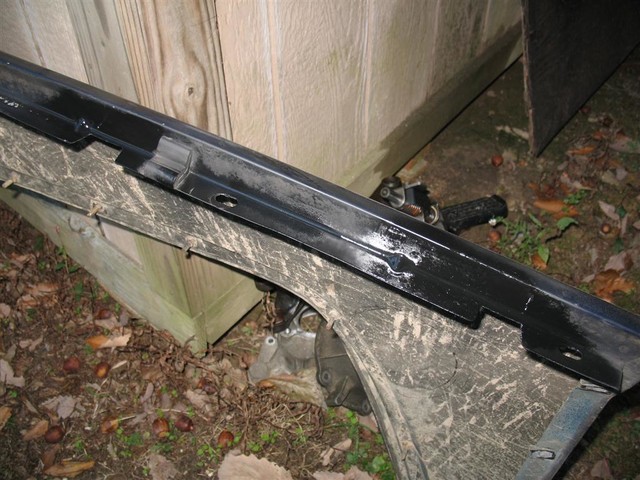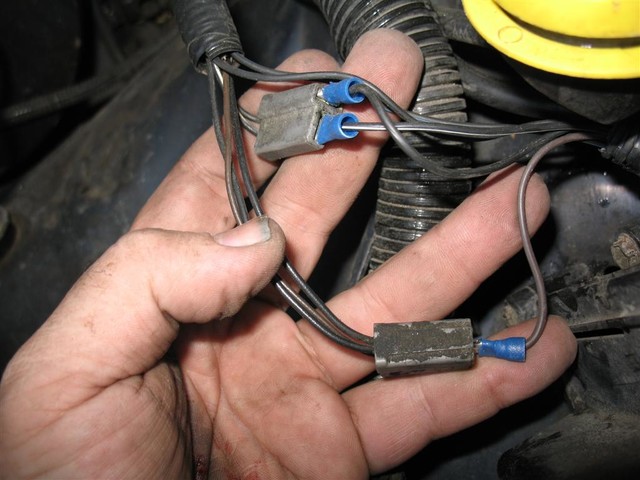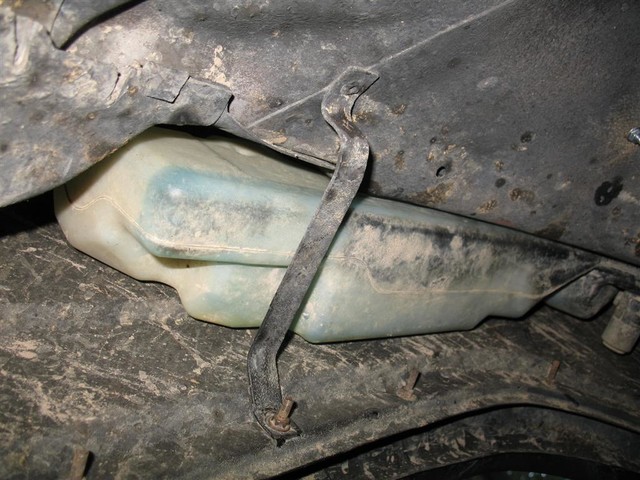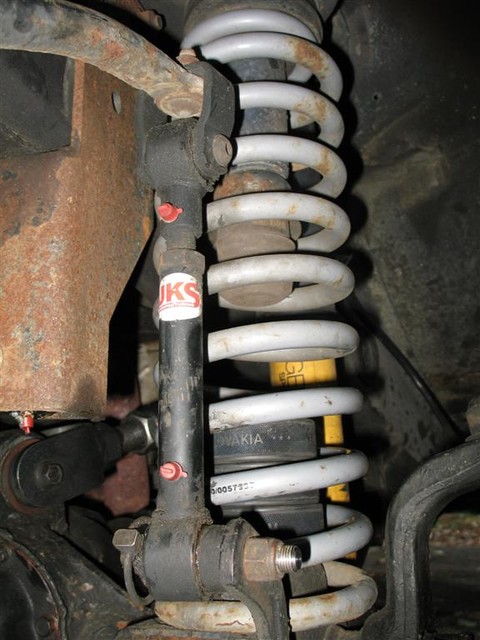I removed the stock heater valve a couple of years ago and have been running the hoses straight through. Unfortunately the AC compressor in my pos is pretty beat, and constant heat in the dash kind of overwhelms it, especially with the way the old-style blend system is setup. I've been thinking about alternative systems for a while and finally started working on something a couple of months ago.
The basic idea is to use a simple in-line vacuum valve to block off supply to the heater core. Then use a bypass towards the front of the engine that will let the coolant return to the pump without shedding heat through the valve at a rapid rate. This is similar to how I setup the heater core in my Cadillac when I did the 4.1 > 4.9 engine upgrade, except that car has two independent returns (one from the core, another from the bypass) that practically eliminates heat transfer altogether. With this setup there is opportunity for contagion, but keeping a long distance on the return leg reduces the rate of heat transfer at the far end enough so that it is not a problem.
For the valve, I used a Four Seasons 74671, which is used on some Audi and Fords (check rockauto.com for interchange list). The valve is setup for 3/4" hose (same as the thermostat supply), normally open (flows when heat is active or when vacuum is removed) with vacuum activating the diaphragm and closing the valve (blocked when HVAC controls are set to cool or turned off). This is installed near the heater core.
Then I rigged up a little bypass from some plastic radiator flush tees, one 3/4" for the supply and one 5/8" for the return. The tees have garden hose fittings but I cut those off with a hacksaw and used JB Weld to form them together (the high-temp stuff not the quick set). This is installed on the lines at the valve cover a little after the pump return tube sticks out.
Installed... When the HVAC controls are set to Heat the valve opens up and coolant flows from the thermostat housing, straight through the 3/4" tee, and through the valve into the heater core. When the HVAC controls are set to Cold or Off, the valve closes and prevents coolant from entering the heater core. At that point the 5/8" bypass channel becomes the low-pressure path and coolant returns directly to the pump intake.
Observations so far:
1) It works
2) AC is much more effective. After a while the heater core gets hot anyway (heat transfer) but the rate of transfer is reduced enough for the AC to overcome. I need to take a long drive to fully measure temperature at the AC vents but short trips are obviously better.
3) Heat is still strong but takes a little longer to build up. Some of the hot coolant always escapes through the bypass, so there is less heat transfer, however the lines do build up to full heat eventually, it just takes a couple more minutes.
4) The short coolant return path in bypass mode means the engine reaches operating temperature MUCH faster when the bypass is active. This also makes heat more effective sooner! This is why the delay is short but still works--when the hot coolant enters the core, cabin heat picks up immediately.
4) There is some lag switching from hot to cold. The OEM design is faster (but much less reliable). When you go from cold to hot, the heater core is flooded with hot coolant and transfer happens pretty quick. When you go from hot to cold, the hot coolant that is trapped has to have its heat sucked off by the blower motor before the AC can overcome, which takes a little longer.
5) You have to bleed the air from the heater lines, same as with the stock setup, which can be difficult versus the straight through hoses.
6) Its cheap. Total cost was $18ish for the valve, $5 for the two tees, and I had the JB Weld on hand. I made another bypass and put it in my emergency bag in case the JB Weld doesn't hold, total cost around $30 I suppose
Will test more over the next few months and see how it goes.

